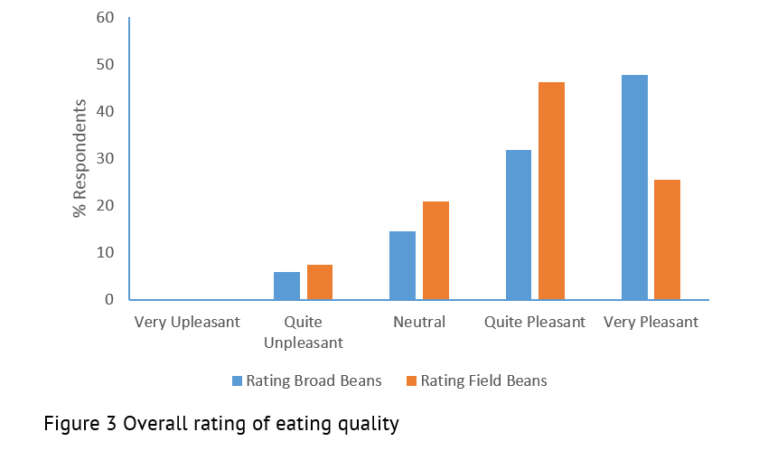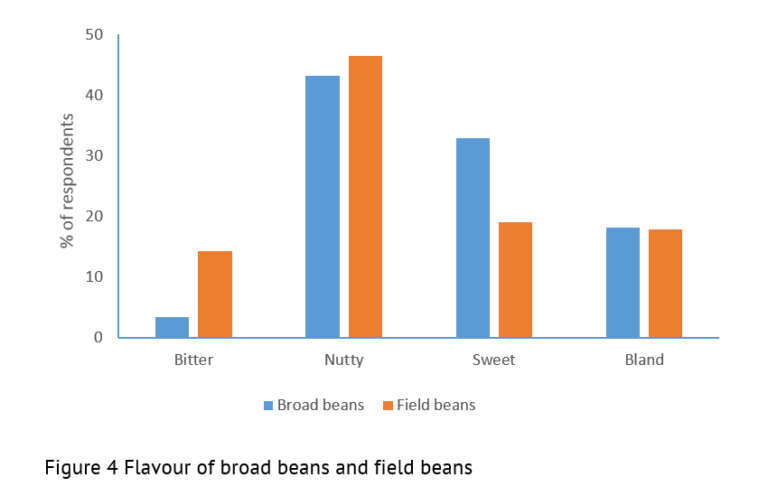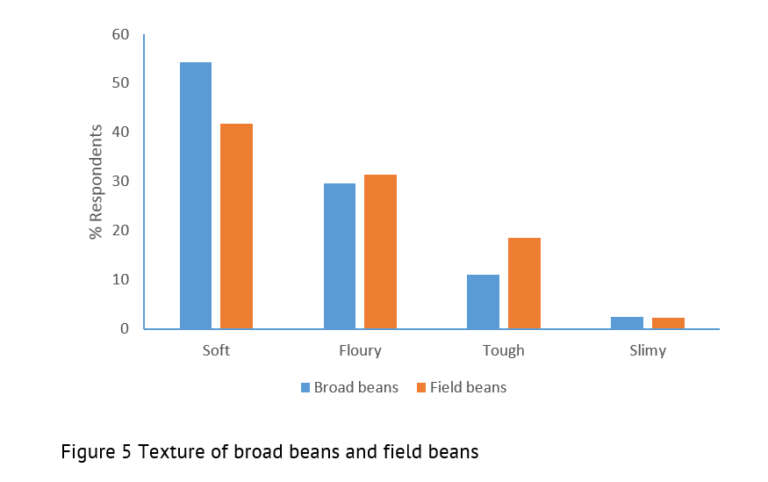Members' experiments
Growing field beans for human consumption
Introduction
Field beans (pictured above left) are the same species as broad beans (Vicia faba) (pictured above right) but they are a different variety producing smaller beans. They are thought to be more vigorous and reliable than broad beans and show better cold tolerance, so can be grown as a winter or spring crop. Many of us have seen field beans growing in the UK, and assumed that they were destined for cattle feed. What people don’t realise is that a significant proportion of the crop is exported to North Africa for human consumption. In Egypt in particular, these beans play an important part in the diet, as they are used as an alternative to chickpeas in many dishes such as falafel and hummus.
In this trial, carried out in 2016, we asked members to grow field beans alongside broad beans and to compare how well they grew, how they yielded and how they liked to eat them. People grew 2 spring varieties: Fuego field beans which are widely grown and prized for their eating qualities and Witkiem broad bean, again grown widely in the UK.
Growth of the plants
There were not large differences between the growth of broad beans and field beans. Most people sowed their beans directly during the second and third weeks of March. There were large differences in how long it took for people’s beans to emerge, with some seeing them emerge within 5 days but others having to wait 20 – 30 days. On balance, broad beans and field beans took similar times, emerging 22 days after sowing on average.
The Witkiem broad beans set pods 61 days after emergence, on average, slightly earlier than the Fuego field beans which set 65 days after emergence. This difference is only small, and there are plenty of other varieties of both field beans and broad beans which will set pods at different times.
Field beans grew slightly taller than broad beans, reaching a height of 124 cm compared to the broad beans 113 cm. Despite their slightly greater height, slightly fewer (53%) people stated that their field beans needed staking compared to the broad beans (62%).
Incidence of black bean aphid was generally low in 2016 and there was little evidence of damage by bruchid beetles in the beans which can be a common problem. There was no difference in the levels of these pests between the varieties.
Bean yield
On average, field beans yielded just over twice as much per plant than the broad beans. This was mainly due to field beans having many more pods. On average, field beans had slightly fewer beans in a pod, but this was more than compensated for by producing 2.5 times as many pods as broad beans. (Figure 2).
Eating quality
Overall perceptions of eating quality (Figure 3) were positive with at least 70% of people rating either of the beans pleasant or very pleasant. There was a slight preference for the broad beans with a higher percentage of respondents rating them as very pleasant.
Almost half of respondents thought that both broad beans and field beans had a ‘nutty’ flavour (Figure 4). ‘Sweet’ was the next most popular flavour attributed to the beans, although more people thought that broad beans tasted sweet than field beans. Similar numbers of people thought that broad beans and field beans tasted bland. Only small numbers of people thought that they tasted bitter, although this was more common in the field beans than the broad beans. Our experience of field beans was that they tasted sweet when harvested early, but tended to develop more bitter flavours than broad beans if left on the plants to long.
At least 40% of people rated broad beans or field as having a soft texture (Figure 5), and at least 30% rated them as having floury texture. There were small differences in people’s rating of texture with more people rating broad beans as soft than field beans and more people rating field beans as tough than broad beans. Our experience of field beans was that they tended to turn tough more quickly than broad beans if left on the plants too long.
People used field beans in a variety of ways. Many people just tried them steamed whereas others made them into other dishes. Risotto was a popular dish and several people made them into a broad bean hummus.
Opinions were pretty evenly divided as to whether they would grow them again. 25 % said they would definitely grow them again and 25% would possibly grow them. 19% said they would definitely not grow them again. The most common reason for not growing them again was that they produced more pods with smaller beans, so it was a lot more effort to shelling them to produce the same amount of beans. People also found that the pods were more difficult to open in field beans.
Conclusions
This trial shows that field beans provide a viable alternative to broad beans. On average they produced substantially higher yields than broad beans, but there were a few disadvantages. The main one was that the yield comprised of a larger number of smaller beans in more pods so entailed a lot more work shelling. Although the eating qualities of broad beans were rated slightly higher than field beans, both were rated quite positively.
It would be interesting to repeat this trial for an over winter crop where field beans are reputed to perform a lot more reliably than broad beans especially in harsh winters. Growing a crop over winter would produce an earlier harvest of beans than a spring sowing, potentially reducing problems with blackfly, one of the most common complaints for growing broad beans or field beans. It would also provide an earlier food source at a time when there are fewer other crops available.




Join Garden Organic!
By becoming a Garden Organic member you can join thousands of people who are already leading the movement for an organic and sustainable future for us all. And get great member benefits!
Join today